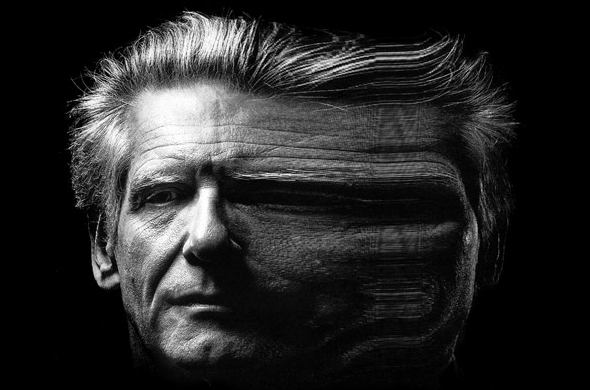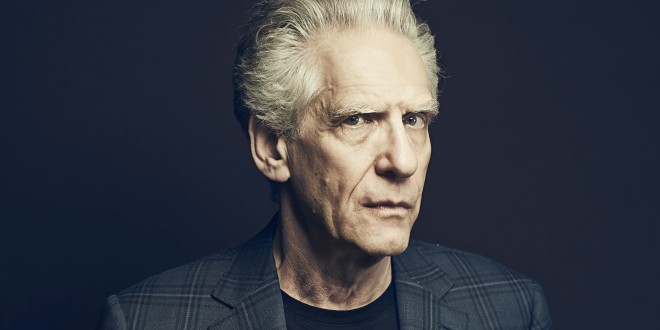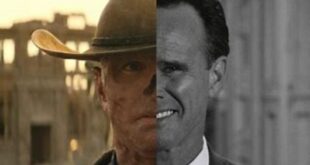It’s impossible to discuss independent filmmaking without bringing up David Cronenberg. The Canadian director – who turned 73 this year on March 15th – has been showcasing his bizarre outlook onto celluloid for half a century now, starting with the short film Transfer in 1966. As one of the world’s most fascinating and influential filmmakers, Cronenberg has never taken on a project that he wasn’t specifically involved in or obsessed with, passing on the easy money of big Hollywood for deeper, more obscure filmmaking. So far, he’s won 68 awards, accolades and achievements with just as many nods of acknowledgment, including a Golden Coach from the Cannes Film Festival in 2006 and a Lifetime Achievement award from the Director’s Guild of Canada.

A master of both biological and psychological fallout, Cronenberg considers the transformations his characters go through to be positive and evolutionary, saying, “Because of our necessity to impose our own structure of perception on things, we look on ourselves as being relatively stable. But, in fact, when I look at a person, I see this maelstrom of organic, chemical and electron chaos; volatility and instability, shimmering; and the ability to change and transform and transmute.” The statement ‘One man’s trash is another man’s treasure’ has never been truer. Cronenberg has his finger on the pulse of society’s misgivings, putting onto film what the world had already been thinking, even if just subconsciously. As times changed, so did he, evolving in his own right from venereal horror to car racing to psychoanalytical, self-serving biopics to the workings of the Russian mob. Totally ahead of his time, Cronenberg uses film and sound to transport the viewer into another time and headspace – and, if there’s ever been a way for audiences to simultaneously experience sight, sound, taste, touch and smell, this one-of-a-kind director would make full use of it.
To celebrate his birthday, let’s take a look at some of this legendary auteur’s top ten greatest films.
- eXistenZ (1999)
The last of Cronenberg’s body horror films, eXistenZ’s greatness has nothing to do with its paper-thin plot – Allegra (Jennifer Jason Leight), a video game designer, is hunted down by a violent, hostile group with a strong aversion to virtual reality while security guard Ted (Jude Law) who helps her escape – yet has everything to do with the not-so-subtle Freudian video game hookups and glossy yet macabre special effects. Everything in this movie is a sexual innuendo, from the video game bioport that’s located at the base of one’s spine that just happens to look like an asshole to the organic-looking phallic prong that the player inserts into their bioport to connect themselves to the virtual reality device. The best part is when Allegra sprays Ted’s bioport with WD-40 because first-time players tend to be tight. Yeah, I bet they do.
- Eastern Promises (2007)
https://www.youtube.com/watch?v=dWC-ECjNqxo
A multi-layered espionage film that’s fraught with tension, romance and knuckle-cracking violence, Eastern Promises was a look through Cronenberg’s eyes at the seedy underbelly of the Russian mob, telling the story of Anna (Naomi Watts), a midwife determined to solve the mystery of a 14-year-old girl (Sarah-Jeanne Labrosse) who died in childbirth but left clues that could tie her baby to underage prostitution and rape involving a powerful Russian mob family. The film sounds like your average, every day espionage thriller. Yet this one stars Viggo Mortensen, an exceptionally talented actor who’s brutal yet nuanced performance as the anti-hero Nikolai Luzhin got him an Oscar nod – not to mention thousands of Youtube views of that kickass penis-flopping fight scene in the baths.
- Rabid (1977)
One of Cronenberg’s earlier films, Rabid gave audiences a peek at the director’s obsession with sex, biology and mutation, going to far as to cast Behind the Green Door’s Marilyn Chambers as Rose, a girl unlucky enough to get into a motorcycle accident right in front of a new age plastic surgery clinic. After getting an experimental skin graft, poor Rose develops a phallic, retractable stinger in her armpit that sucks blood and turns its victims into zombies. So soon after the free love movement of the ‘60s, Rabid reminds people that even a friendly little romp in the hay can get you killed. Cronenberg shows her struggle not as a monstrous transformation, but as a sad flaw in the medical experiment that should have saved Rose. She was not a bad girl who deserved what she got. Instead, she was the victim of wrong time, wrong place – something that could happen to anyone, no matter how well they live their lives.
- Dead Ringers (1988)
https://www.youtube.com/watch?v=H5HrHcgnWRw
Identical twins can be pretty creepy, and Hollywood won’t let us forget it. Based on the real life story of drug-addicted twin gynecologists Stewart and Cyril Marcus, Dead Ringers was Cronenberg’s announcement that he was transitioning from biological body horror to psychological mind horror. The amazing Jeremy Irons did double duty as both Elliot and Beverly Mantle, twin Canadian gynecologists who fall in love with the same woman, a wedge that not only separates the twins emotionally and physically but also forced the meek Beverly to start abusing drugs, have visions of women with mutated genitals and dream up the absolutely monstrous gynecological equipment used to “care” for these women. Masterfully combining terrors of both the mind and body, the director analyzes the untouchable, unteachable bond between twins, all the while reminding us of his sexual, sadomasochistic tendencies that we have all come to know and love.
- Scanners (1981)
One of Cronenberg’s most talked about films, Scanners was the go to VHS rental back in the ‘80s and ‘90s. Gorehounds couldn’t get enough of that infamous head explosion scene in the beginning and the eyeball popping, flesh liquefying final showdown between Darryl Revok (Michael Ironside in his breakout role) and Cameron Vale (Stephen Lack) in the last scene. The story in between is a bit slow – in a world where telekinesis can be used as a weapon, the renegade Vale decides to take on the evil ConSec corporation before they can build an army of telekinetic scanners – but remains electric due to Howard Shore’s score and Ironside’s heavy handed acting.
- The Dead Zone (1983)
https://www.youtube.com/watch?v=lmC5oPc7L3M
Filmed on location during a record-breaking Ontario cold snap, The Dead Zone was the first and only time Cronenberg would work with horror master Stephen King. By casting the quirky and eccentric Christopher Walken to play King’s everyman, John Smith, the director took a story that could have been a less than stellar affair and created an iconic movie that stuck with viewers for hours after watching. After a car accident, schoolteacher Johnny Smith wakes from a seven-year coma to find that he now has the ability to see the past/present/future of anyone he touches. This makes him an asset to crime solving detectives but his own quality of life deteriorates once he realizes he can never get away from his visions. Taking on telekinesis once again, Cronenberg took what he previously considered a weapon and turned it into a life-altering curse, one that will constantly burden its victim with the knowledge that he could change the future. “If you could go back in time to Germany, before Hitler came to power, knowing what you know now, would you kill him?” That, right there, is a question for the ages.
- The Brood – 1979
A man in the middle of a divorce and the resulting child custody battle realizes there’s more to his ex-wife than he ever imagined. Sounds like the tagline to Kramer vs. Kramer, doesn’t it? Cronenberg’s take on the ending of marriage is darker, more sinister and much bloodier than that. On its surface, it’s a mere monster movie with some creepy, disfigured kids. Dig a little deeper, though, and you realize that this is a movie about the physical products of a continued, furious rage; that the anger that one feels can only have unpleasant consequences. There’s also the real life struggle of divorce and the intensity of child custody battles, a struggle that the director went through with his first wife, Margaret, and the battle for their daughter, Cassandra. This film was much more complete technically, used better cinematography and lighting and built a high powered tension that was missing from Shivers and Rabid. Like Rabid, the film involves new scientific technologies – a process that frees patients from their pent-up psychological trauma by forming their emotions into strange, grotesque, living physical manifestations. Top that all off with a scary, murderous mommy and you’ve got yourself one hell of a horror movie.
- A History of Violence (2005)
One of Cronenberg’s more mainstream films, A History of Violence tells the story of a small town café owner, Tom Stall (Viggo Mortensen), and the resulting attention he gets when he swiftly and single-handedly kills two robbers in self-defense. A more subtle film than what audiences were expecting from the director, the film relies more on emotional tension and family relationships than supernatural, gross-out horror. Mortensen played the conflicted Stall with an understanding and know-how of Cronenberg’s films, readily able to pick up what the director was laying down. Although we never get closure as to how Stall’s wife deals with the knowledge of her husband’s history of violence, for Cronenberg, it’s more about the journey than the destination. The flashy, blood-curdling special effects and the psychological breakdowns in his previous films are gone, leaving only an innate carnage boiling beneath the surface of this small-town proprietor. The film was recognized for a plethora of awards and acknowledgements, including both William Hurt and Josh Olson, who were nominated for Oscars for A History of Violence – the former for Best Supporting Actor for his performance of Richie Cusack and the latter for Best Writing/Adapted Screenplay.
- Videodrome (1983)
The very definition of techno-surrealism, Videodrome attacks the audience at its own guilt-ridden core, throwing in their collective faces the irony that the very thing they happen to be watching is the evilest thing in the world. The more they enjoy the film, the more screwed they happen to be. Of course, on the other hand, the more jaded they are by what they see, the more the filmmakers need to step it up. Even back in the ‘80s, Cronenberg knew where this country was headed pop culturally, and although sentient videotapes are not our biggest downfall (The Ring notwithstanding), we are overwhelmed with voyeuristic reality shows, instant gratification, look-at-me selfies and hyper-technology that keep us constantly entertained yet unable to complete an independent thought. The story is about a sleazy television producer, Max (James Woods), who’s willing to let his own life and the lives of those who watch his channel to go full tilt boogie insane, just for the sake of higher ratings. The erotic, disgusting, violent, hallucinogenic ride that Max takes to discover the New Flesh combines machines and human anatomy in a way that would make H.R. Giger proud. The original title, Network of Blood, works as well today to describe our addiction to social media as more than just wires and circuits, but also of bodies and politics. It is certainly Cronenberg’s most vivid and enduring pieces of cinema to date.
- The Fly (1986)
https://www.youtube.com/watch?v=7BzwxJ-M_M0
Like The Brood, The Fly is multilayered and difficult to categorize. It’s the story of the downward spiral of a scientist who feels love and heartbreak, a brilliant mind whose very intelligence becomes his downfall. The sympathetic main protagonist is also the film’s deadly monster. When lovelorn Dr. Seth Brundle (Jeff Goldblum) thinks his girlfriend, Veronica (Geena Davis), is in love with another man, rather than buy her flowers and take her on a romantic getaway, he jumps into his complete yet untested invention – a teleportation device – to impress her. Although the experiment seems to work, the tiny, annoying housefly that happened to teleport with him has mixed its DNA with his during the trip. As time goes on, Brundle’s body starts transforming, his human flesh falling away to make way for the hairy, articulated, shiny chitin exoskeleton of one of the world’s lowliest creatures. Goldblum gave Brundle a quirky, relatable character, so as his body painfully and repulsively transforms, we can’t help but squirm vicariously from our seats on the couch. When Veronica realizes she’s pregnant and has no idea if she conceived before or after Brundle’s experiment, the idea that a half human, half maggot creature was growing in her womb was horrifying beyond reason. “I’m saying… I’m saying I – I’m an insect who dreamt he was a man and loved it. But now the dream is over… and the insect is awake,” Brundle says to Veronica as his body and mind morph permanently into a puking, insatiable insect. Needless to say, the Oscar for Best Makeup has never been more deserved than it was when Chris Walas and Stephan Dupuis went home with gold in 1987.
During his career in filmmaking, Cronenberg has gone through many stages – all of them disturbing and self-aware. He makes no apologies for the things he shows us and offers only a smile and a slight nod as we walk away, feeling more informed yet uncomfortably dirty. A man who allows us into his mind to give us a glimpse at what’s going on in our own, Cronenberg is the distorted, funhouse mirror that we see yet can’t look away from.
 PopHorror Let's Get Scared
PopHorror Let's Get Scared




